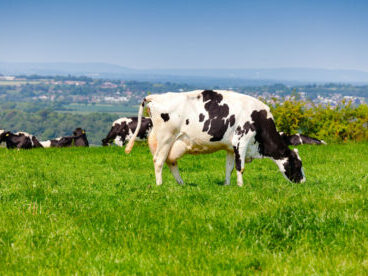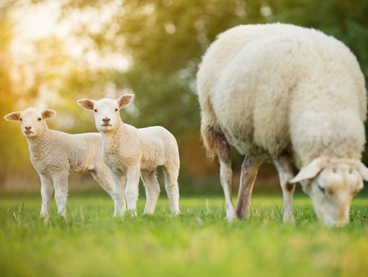Joe Magadi from UFAC UK answers some questions to try and help you in making a choice about fat supplements.
Fats Demystified
Use of fat supplements in dairy cow diets can be a real minefield and can appear a very complex area. Here, Joe Magadi from UFAC UK answers some questions to try and help you in making a choice.
Q:So Joe, why should I use a fat anyway?
A: First and foremost – energy! It can be a big challenge getting enough energy into high yielding cows. Fats contain well over twice as much energy as starch and sugar. If we want to ensure all the nutrients the cow requires are packed into a limited dry matter intake, fats are a crucial element. Because so much energy can be supplied in only 500 grammes or so, there is more space left within the intake limit to allow the inclusion of higher levels of lower energy – but very cost effective – forages, increasing the overall utilisation of home grown forages and drive down total feed cost per litre. This not only maximises forage utilisation, but also ensures rumen function is optimised, and a healthy rumen gives healthier and more productive cows. And a point that is often overlooked is that unlike increasing inclusion rates of starches and cereals, all of this energy from fat carries no acidosis risk!
Q:OK – so all oils supply this energy, right?
A: Afraid not, it’s a little more complicated. To use an oil, animals need to emulsify it. This happens post-rumen. If the fats fed are solids they have to be melted first. So it follows, if the fats have a melting point higher than the body temperature of the cow (39oC), the cow will find it more difficult to emulsify them and use them efficiently. If you think that saturated fatty acids such as C16 and C18 fats have melting points of around 63oC -69oC, you can easily see why it is hard for them to be used effectively.
Q:OK – so is it just energy they supply?
A: No! Some oils contain Essential Fatty Acids. These are fatty acids that the cow needs in order to be efficient and productive, but they cannot synthesise themselves. So they have to be included as part of the diet. Chief amongst these are the long-chain omega-3 fatty acids DHA and EPA – and these are only found in fish oils, nowhere else.
Q:Essential? Just how important are they?
A: Supplying the cow with EPA and DHA has been shown to improve health and reproductive performance. Numerous trials show that increasing EPA and DHA increases progesterone production; and this means bulling activity is increased, making heat detection easier while early embryo loss is decreased. All of this means fewer days open and shorter calving intervals. EPA and DHA also improve the cows’ immune system, meaning reduced losses as a result of inflammatory disease such as mastitis and laminitis and less vet attention.
Q:You talk about different oils; so I guess products differ…?
A: Exactly right. Some products – such as calcium soaps and ‘C16’ products are based on a single oil type, namely palm oil. These have high melting points so are not easily utilised by the cow. Other oils such as soya, rape, sunflower and fish supply essential fatty acids such as linoleic, EPA and DHA. These oils all have much lower melting points and so are very easily emulsified and digested. And remember, too, that EPA and DHA can only be found in fish oils.
Q:OK…so what does that mean to my cows?
A: By using soft oils from soya, rape, sunflower and fish, you can make sure your cows have the best, most highly available energy and essential oil sources included in their diet, meaning they will probably produce milk more efficiently. Your cows will likely have to mobilise less body fat in early lactation; will get in calf more readily and not lose the embryo in early pregnancy; and be healthier overall. Of course, this assumes the overall diet is balanced in the first place.
Q:And for me?
A: Well, healthier cows are almost always more productive cows. Field studies in the last three years suggest cows utilise soft oil blends better (even when total oil content is less) and produce more milk – between 1 and 2 litres per head per day. They also lose less condition in early lactation. All in all, it means more profit for you, from more milk, fewer empty days, less straws of semen and less veterinary attention.
Q:Thanks, that has been helpful. Anything else to consider?
A: The golden rule is get the basics right first! Whilst the right fat blend will help maximise use of homegrown feeds and forages, these need to be the best quality you can make. You then need to ensure the whole diet is well balanced. Only then will the best fat blend, based on highly digestible soft oils, help to push up your profits.


 Back to News
Back to News 



